Juwangsan Mountain Seongcheondaek
0m 10745 2021-04-09
12, Seodang-gil Cheongsong-eup, Cheongsong-gun, Gyeongsangbuk-do
+82-10-6711-6427
Seongcheondaek House with about 300 years' history is an old hanok guesthouse located in Cheongun-ri at the entrance to Juwangsan Mountain, which can be reached by driving along Yongjeoncheon Stream from Cheongsong County in Gyeongsangbuk-do. With the tranquil surrounding atmosphere among houses in the alley, the house features a typical square-shaped structure of the mountain region.
Seongcheondaek House is presumed to have been bought by Im Chun-seop, a high-ranking official during the reign of King Gojong (r. 1863-1907) of the Joseon Dynasty, but its exact construction date is unknown. It was designated as National Folklore Cultural Heritage No. 172 in 1984.
This cozy hanok house consists of the main gate with straw-thatched roof, square-shaped Anchae (Women’s Quarters), middle gate, Sarangbang (master’s room), tea room, old stable, Daecheongmaru (hall between rooms) overlooking the courtyard with beautiful scenery, and so on. In particular, guests can enjoy a romantic atmosphere from Daecheongmaru by appreciating the scene of falling raindrops or melting snow from the edges of the eaves.
The Munganchae (gate building) consisting of a bathroom and a kitchen has a straw-thatched roof and a renovated interior for the guests’ convenience. The square-shaped Anchae is composed of two guestrooms (Sarangbang and Anbang) and a reading room (Utbang). The rooms feature a traditional construction style with cozy and clean interior items including a small wooden table as well as clean beddings. In addition, a kitchen is situated in front of Anbang, displaying traditional kitchen appliances including a fireplace and two large iron pots, unlike a modern-style kitchen in Munganchae. Daecheongmaru of Anchae offers an open view of the outdoor landscape through two large wooden windows. In addition, a deep groove in the middle of the yard in front of Daecheongmaru catches one’s eyes. The groove is said to have been made due to the rubbing of the foot on the ground when weaving hemp cloth hundreds of years ago.
Guests can enjoy relaxation both during daytime and nighttime under a starry sky in the yard where a small wooden bedstead and a stone table are situated. Moreover, the house provides folk games such as neolttwigi (Korean see-sawing game) and tuho (pitch-pot) as well as the family art therapy program wherein family members can understand each other better through a painting and drawing activity. Surrounding tourist attractions include Juwangsan National Park and Jusanji Reservoir.
Musée Folklorique de Cheongsong (청송민속박물관)
1.7 Km 3211 2021-02-26
222, Juwangsan-ro, Cheongsong-eup, Cheongsong-gun, Gyeongsangbuk-do
+82-54-874-9321
Situé dans le Parc National de Juwangsan (à Cheongsong, Gyeongsangbuk-do), le Musée de Cheongsong fut ouvert en 1999 afin de promouvoir l’Histoire et la culture du comté et de sa région proche.Le musée de trois étages propose des salles d’expositions intérieures et extérieures ainsi que des salles d’archives. La Salle d’Expositions Intérieure présente du matériel d’éducation lié à l’agriculture et aux coutumes de Cheongsong. Des expos –telles que « La Chambre d’Hôtes Traditionnelle », « La Salle de Tissage », « Les Objets de la Vie Quotidienne », et « La Porcelaine de Cheongsong »- proposent des aperçus du mode de vie des habitants d’autrefois.
La Salle d’Expositions Extérieure reproduit quant à elle une taverne traditionnelle, une Mulle banga (roue à eau), une Yeonja banga (meule animée par la traction de chevaux ou boeufs), un Josan (monument pour éloigner le mauvais sort et protéger la prospérité) ainsi que des Seondeol (pierres naturelles utilisées pour des pratiques religieuses). Tout cela vous permet de découvrir la vie agricole du passé. Des totems traditionnels (appelés Jangseung ou Sotdae) vous attendent à l’entrée du musée.
Les horaires pour les expositions sont de 9h à 18h (17h en hiver). Le musée est aussi entouré par de nombreuses attractions touristiques : Wangbeodeul (grand saule désigné Monument Naturel numéro 297) à Bugok-dong, les Chutes Dalgi, la Rivière Cheongun et le Terrain de Campin Estudiantin de Songsaeng-ri.
Le festival de la pomme à Cheongsong (청송사과축제)
4.0 Km 2853 2022-09-13
Songsaeng-ri, Cheongsong-eup, Cheongsong-gun, Gyeongsangbuk-do
• Centre d'appels 1330 : +82-54-1330 (coréen, anglais, japonais, chinois) • Pour obtenir plus d'info : +82-54-873-0101
Le festival de la pomme à Cheongsong est un festival d’automne plein d’événements avec un marché largement bien approvisionné en pommes de haute qualité à un prix raisonnable. Les événements incluent des compétitions, des jeux, des activités, des pièces de théâtre et bien d’autres. Tentez votre chance à l’une des compétitions (manger des pommes, fendre une image à mains nues, gourmandises au jus de pomme) ou ayez une approche plus calme des festivités en passant par les programmes d’activités (attraper des pommes, faire des savons et des produits de soins du corps à base de pommes, etc.). Il y a également une variété de jeux au thème de la pomme comme la coupe du monde de la pomme ou des jeux de fléchettes avec des pommes.
*Les pommes cultivées dans les environs de Cheongong sont connues pour leur goût supérieur et leur qualité grâce à leur environnement propre, à l’air frais de la montagne et les eaux claires et propres. Beaucoup attribuent le goût frais et juteux de la pomme à la haute différence de température quotidienne qui résulte de la haute altitude de la région.
Juwangsan Spa Tourist Hotel (주왕산온천관광호텔)
4.2 Km 16384 2021-08-10
315, Jungang-ro, Cheongsong-gun, Gyeongsangbuk-do
+82-54-874-7000
Juwangsan Spa Tourist Hotel is located approximately 15 minutes from Juwangsan National Park. The hotel has clean rooms, a Korean restaurant, banquet hall, and spa facilities. Guests may take advantage of the health programs offered at the spa or enjoy the hot springs sauna that uses alkaline water, which has been proven to heal chronic headaches and shoulder pain.
CheongSong folk&Arts Village [Korea Quality] / 청송 한옥민예촌 [한국관광 품질인증]
4.2 Km 6658 2020-12-12
494, Juwangsan-ro Budong-myeon, Cheongsong-gun, Gyeongsangbuk-do
+82-54-874-9098
'Cheongsong Hanok Folk Arts Village is situated within the Cheongsong Tourist Site, which is maintained and operated by the Cheongsong Culture & Tourism Foundation. The Cheongsong Tourist Site consists of the Hanok Folk Arts Village, which is an accommodation houses, Pottery Village, Exhibition Center, Museum, restaurants, and other convenient facilities. The Pottery Village provides a hands-on experience program for visitors who want to try their hand at making Cheongsong white porcelain, a renowned cultural heritage of Cheongsong, and consists of various interesting structures including a dugout hut-type workshop built with rubble and mud. The Exhibition Center consists of the Cheongsong White Porcelain Exhibition Pavilion and the Simsugwan Pottery Pavilion, while the Museum consists of the Folk Exhibition Hall, which displays a variety of Cheongsong’s traditional cultural assets, and the Ggotdol Museum, which exhibits ggotdol (naturally-patterned rocks) found only in Cheongsong. In addition, guests can use the various restaurants, seminar room, sports facilities, and nature trail located within the Cheongsong Tourist Site. Cheongsong Hanok Folk Arts Village is composed of seven hanok houses, namely, Daegamdaek, Yeonggamdaek, Jeongseungdaek, Hunjangdaek, Chambongdaek, Gyosudaek, and Saengwondaek, each of which is named after its principal characteristics. Thus, Daegamdaek, Yeonggamdaek and Jeongseungdaek have many rooms with a courtyard and a wooden floor, while Saengwondaek and Chambongdaek are simple thatched houses. Each hanok house has a different size and structure, and is equipped with high-quality antique furniture made by artisans, and bedding. Cheongsong Hanok Folk Arts Village also has special traditional spaces that are rarely found in other hanok accommodation, including a barn, warehouse, and traditional kitchen that are not currently used but which exhibit the traditional features of hanok. Each house is equipped with a modern bathroom, toiletries, and hairdryer, while communal toilets and a shower room are situated outside the houses.
Terminal des bus interurbains de Cheongsong
4.6 Km 2921 2015-12-04
484-40 Wolmak-ri Cheongsong-eup Cheongsong-gun Gyeongsangbuk-do
+82-54-873-2036
Dalgi Yaksutang (Source d’eau minérale) (달기약수탕)
4.7 Km 11935 2021-03-04
16, Yaksu-gil, Cheongsong-gun, Gyeongsangbuk-do
+82-54-870-6111
Située à seulement 5 minutes de Cheongsong-eup, la source de Dalgi Yaksutang (« Yaksu » signifie en coréen « eau médicinale ») est l’une des trois premières « Yaksu » de Corée en terme de qualité de l’eau. L’eau la source jaillit à 10 endroits différents dans la vallée et les ruisseaux se rejoignent à la chute de Dalgi sur le mont Juwang. L’eau coule toute l’année ; elle ne gèle pas en hiver et s’écoule librement même pendant les périodes de sécheresse. Même si l’eau n’a pas de saveur ou de couleur particulière, le riz bouilli dans cette eau spéciale prend une couleur bleuâtre et sa texture devient collante. L’eau contient du carbone naturel et son goût fait penser au soda sans sucre ni saveur. Elle contient de nombreux minéraux tels que le carbone ou le fer, et on dit qu’elle est efficace contre l’anémie, les troubles digestifs et les irritations de la peau.
Le parc national de Juwangsan est l’une des principales destinations touristiques à proximité. De nombreux visiteurs viennent y voir ses formations rocheuses uniques et ses chutes d’eau. Non loin des sources se trouvent aussi quantité de restaurants spécialisés dans le Baeksuk, un ragoût de poulet farci dont le bouillon est fait d’eau médicinale.
Cheong won dang [Korea Quality] / 청원고택 [한국관광 품질인증]
5.5 Km 646 2021-04-01
3 Songsogotaek-gil, Pacheon-myeon, Cheongsong-gun, Gyeongsangbuk-do
+82-10-3530-6119 / +82-54-872-6119
Under joint management with the Korean Tea Association’s Yeongeun Culture Center, Chungwon Gotaek is a great place to enjoy traditional Korean tea time while experiencing a traditional Korean house where you will see all the features of an old Korean house as well as how people lived a slow and leisurely life in the past. Since Chungwon Gotaek only has one stand-alone guestroom that can be booked by only one couple/group at a time, it’s the perfect place to stay for leisure. The guesthouse has a separate tea room managed by the Yeongeun Culture Center, where you can enjoy traditional Korean tea while learning the proper way to drink tea in Korea, which is quite different from that of other Asian countries. Many Korean guests will agree that they feel at home. The guesthouse also serves Korean-style breakfast, which includes various side dishes that vary by season.
Song jeong Historic House [Korea Quality] / 송정고택 [한국관광 품질인증]
5.6 Km 8154 2020-09-10
15-1, Songsogotaek-gil Pacheon-myeon, Cheongsong-gun, Gyeongsangbuk-do
+82-10-8746-6690
Cheongsong-gun in Gyeongsangbuk-do is a small village blessed with a spring flowing with natural mineral water, a beautiful valley with a majestic waterfall, and a mountain densely covered with pine trees. Thanks to this superb natural environment, Cheongsong-gun was designated as a 'Slow City' in 2011. Songjeong gotaek (The Old House of Songjeong) is located in the village of Deokcheon in Cheongsong-gun, which is one of the three richest and most prestigious families in the region.
These three wealthy families are said to have produced millionaires for nine generations - from Sim Cheon-dae during the reign of King Yeongjo of Joseon (r. 17224-1776) to the 1960s. In particular, it was a seventh-generation grandson, Sim Ho-taek (pen-name: Songso), famous as one of the richest men in Joseon, who built Songso gotaek (Old House of Songso) along with three houses for his three sons, including Songjeong gotaek for his second son Sim Sang-gwang (pen-name: Songjeong) around 1880. As the Cheongsong Sim Clan has lived in the area for many generations, Cheongsong is known as the village of the Cheongsong Sim family.
Covering a total area of about 10,000m2, Songjeong gotaek has a tall and grand front gate that symbolizes the wealth of the family. Upon entering by the gate, the large outer courtyard comes into view, followed by a gate connecting to the Old House of Songso on the right, and a walking path connecting to a well and a pine grove on the left. The square-shaped structure consists of a sarangchae (detached building), chaekbang (library), and daecheongmaru (main floored room). Passing through the entrance, there are the main building and the inner courtyard. Notably, the chaekbang has retained its original appearance from the time when it was used by Sim Sang-gwang.
Although the house is very large, its interior is simply and modestly designed according to the virtues favored by classical scholars. The rooms are floor-heated in the traditional way (by ondol) using wood, decorated with traditional hanji (Korean paper), and equipped with traditional bedding.
Songjeong gotaek offers visitors a variety of experience programs designed to promote the form of Korean classical music known as Gukak. It holds three major musical events each year including a pansori folksong program and a fusion gukak concert, attracting an audience of anywhere from 200 to 800 people to the courtyard of the house. Sometimes, families hold parties to celebrate their parents’ 60th, 70th, and 80th birthdays.
The low hill situated behind the house has a quiet walking path.
Maison traditionnelle Songsogotaek à Cheongsong (청송 송소고택)
5.6 Km 4136 2021-12-22
15-2, Songsogotaek-gil, Pacheon-myeon, Cheongsong-gun, Gyeongsangbuk-do
+82-54-874-6556
Il s'agit de la maison traditionnelle, dit “Hanok”, construite dans les années 1880 par Sim Ho-taek, 7ème génération de Sim Cheo-dae, le multi millionaire de l'époque du règne du roi Yeongjo (1694-1776). Cette maison est aussi connue sous le nom de “Sim Bujatjip” (maison du riche Sil).
Entourée par une forêt, la maison d'intègre harmonieusement à la nature environnante. Elle est immense, elle se compose de sept édifices et de 99 chambres. Le jardin est la première chose que vous verrez en entrant. La maison est de forme rectangulaire, c'est un bon exemple des maisons de noble de la dynastie Joseon.
C'est aujourd'hui un hébergement idéal pour les touristes qui désirent découvrir la Corée traditionnelle. Si vous y passez la nuit vous aurez l'occasion d'apprendre quelques jeux folkloriques traditionnels, comme le jegichagi, le lance-pierre, le tuho (lancer de flèches) et plus. De nombreuses familles dont les ancêtres occupaient des postes importants au cours de la dynastie Joseon vivent dans les alentours de Deokcheon .
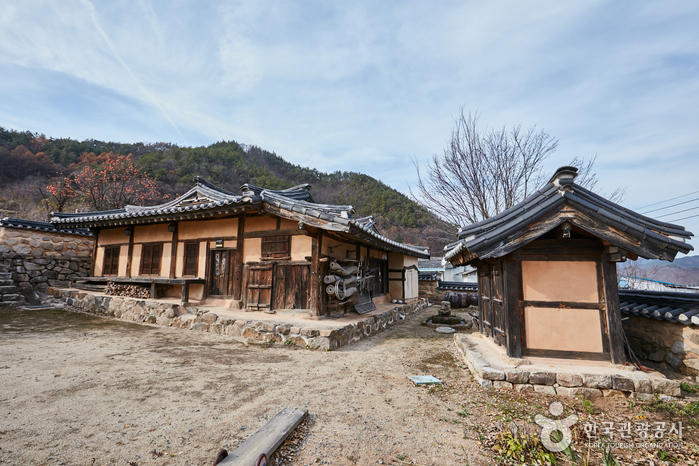
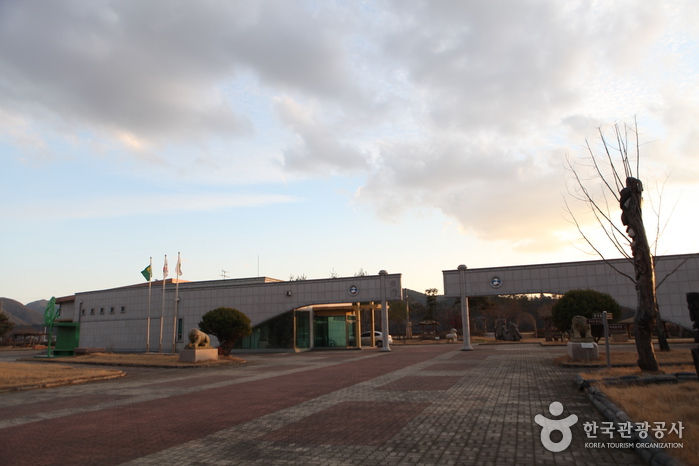
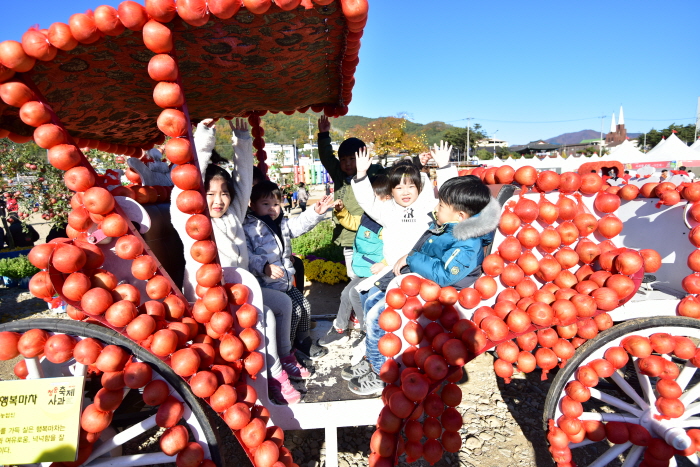

![CheongSong folk&Arts Village [Korea Quality] / 청송 한옥민예촌 [한국관광 품질인증]](http://tong.visitkorea.or.kr/cms/resource/14/2048414_image2_1.jpg)
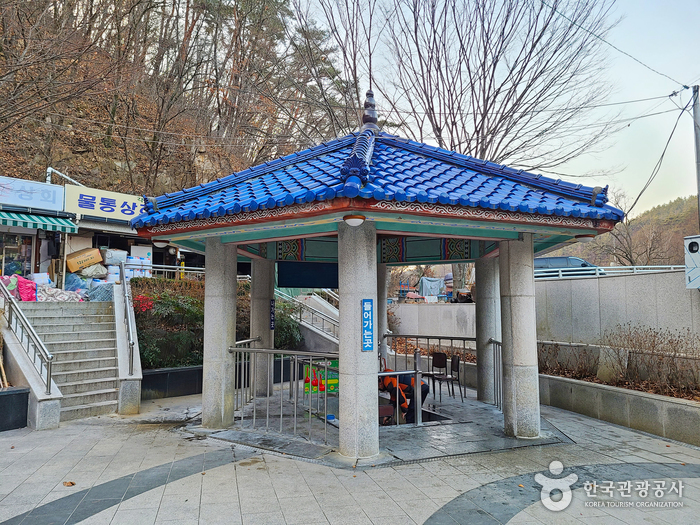
![Cheong won dang [Korea Quality] / 청원고택 [한국관광 품질인증]](http://tong.visitkorea.or.kr/cms/resource/32/2528932_image2_1.jpg)
![Song jeong Historic House [Korea Quality] / 송정고택 [한국관광 품질인증]](http://tong.visitkorea.or.kr/cms/resource/75/2573875_image2_1.jpg)
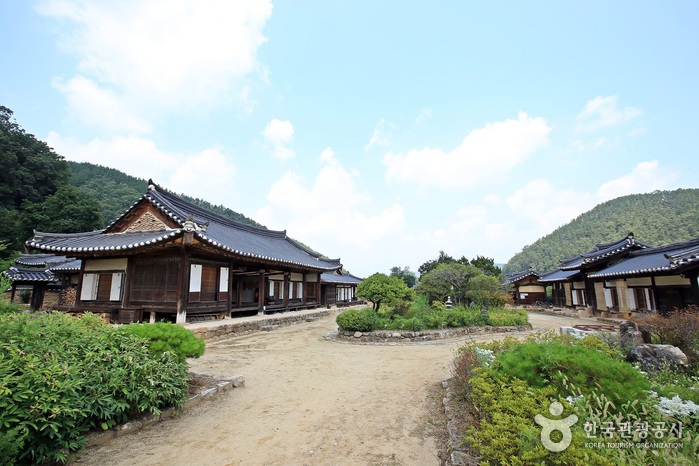
 Français
Français
 한국어
한국어 English
English 日本語
日本語 中文(简体)
中文(简体) Deutsch
Deutsch Español
Español Русский
Русский